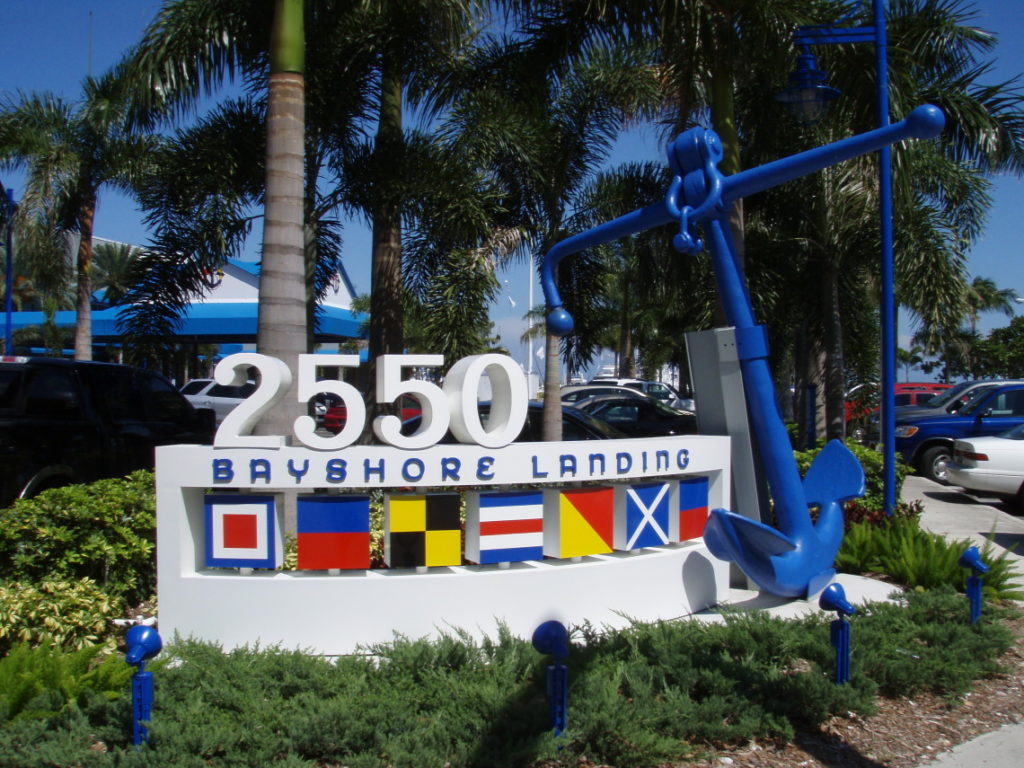Independent Contractors with Seamen Status
 Illustrative of the unbroken line of federal cases holding that persons working on ships for independent contractors or persons rightfully transacting business on ships can recover for damages due to shipowners’ negligence are: Leathers v. Blessing, 1882, 105 U.S. 626, 26 L.Ed. 1192; The Max Morris, 1890, 137 U.S. 1, 11 S.Ct. 29, 34 L.Ed. 586; Gerrity v. The Kate Cann, D.C.1880, 2 F. 241; The Helios, D.C.1882, 12 F. 732, decision by Judge Addison Brown; Grays Harbor Stevedore Co. v. Fountain, 9 Cir., 1925, 5 F.2d 385; Tide Water Associated Oil Co. v. Richardson, 9 Cir., 1948, 169 F.2d 802; Brady v. Roosevelt S.S. Co., 1943, 317 U.S. 575, 577, 63 S.Ct. 425, 426, 87 L.Ed. 471. See also cases collected in 44 A.L.R. 1025–1034.
Illustrative of the unbroken line of federal cases holding that persons working on ships for independent contractors or persons rightfully transacting business on ships can recover for damages due to shipowners’ negligence are: Leathers v. Blessing, 1882, 105 U.S. 626, 26 L.Ed. 1192; The Max Morris, 1890, 137 U.S. 1, 11 S.Ct. 29, 34 L.Ed. 586; Gerrity v. The Kate Cann, D.C.1880, 2 F. 241; The Helios, D.C.1882, 12 F. 732, decision by Judge Addison Brown; Grays Harbor Stevedore Co. v. Fountain, 9 Cir., 1925, 5 F.2d 385; Tide Water Associated Oil Co. v. Richardson, 9 Cir., 1948, 169 F.2d 802; Brady v. Roosevelt S.S. Co., 1943, 317 U.S. 575, 577, 63 S.Ct. 425, 426, 87 L.Ed. 471. See also cases collected in 44 A.L.R. 1025–1034.
Craig v. M/V Peacock On Complaint Of Edwards, 760 F.2d 953, 961 (9th Cir.1985) citing Bullis v. Twentieth Century Fox Films Corp., 474 F.2d 392, 394 n. 10 (9th Cir.1973) (wherein the court noted it might be conceivable for an actor, bartender or musician aboard a vessel to qualify for seaman status, where for instance, a cruise ship advertised a Shakespearean festival en route, then the festival actors might be considered seaman since they contribute to the function of the vessel or to the accomplishment of its mission).
David A. Neblett
Removal to Federal Court
A defendant or defendants desiring to remove any civil action or criminal prosecution from a State court shall file in the district court of the United States for the district and division within which such action is pending a notice of removal signed pursuant to Rule 11 of the Federal Rules of Civil Procedure and containing a short and plain statement of the grounds for removal, together with a copy of all process, pleadings, and orders served upon such defendant or defendants in such action.
(b) The notice of removal of a civil action or proceeding shall be filed within thirty days after the receipt by the defendant, through service or otherwise, of a copy of the initial pleading setting forth the claim for relief upon which such action or proceeding is based, or within thirty days after the service of summons upon the defendant if such initial pleading has then been filed in court and is not required to be served on the defendant, whichever period is shorter.
If the case stated by the initial pleading is not removable, a notice of removal may be filed within thirty days after receipt by the defendant, through service or otherwise, of a copy of an amended pleading, motion, order or other paper from which it may first be ascertained that the case is one which is or has become removable, except that a case may not be removed on the basis of jurisdiction conferred by section 1332 of this title more than 1 year after commencement of the action.
Since the procedure in removal cases is now governed by the Federal Rules of Civil Procedure [Rule 81(c) ] and Federal Rules of Criminal Procedure [Rule 54(b) ], the detailed directions of the various sections with respect to such procedure were omitted as unnecessary.
1949 Acts. Subsection (b) of section 1446 of Title 28, U.S.C., as revised, has been found to create difficulty in those States, such as New York, where suit is commenced by the service of a summons and the plaintiff’s initial pleading is not required to be served or filed until later.
The first paragraph of the amendment to subsection (b) corrects this situation by providing that the petition for removal need not be filed until 20 days after the defendant has received a copy of the plaintiff’s initial pleading.
This provision, however, without more, would create further difficulty in those States, such as Kentucky, where suit is commenced by the filing of the plaintiff’s initial pleading and the issuance and service of a summons without any requirement that a copy of the pleading be served upon or otherwise furnished to the defendant. Accordingly the first paragraph of the amendment provides that in such cases the petition for removal shall be filed within 20 days after the service of the summons.
The second paragraph of the amendment to subsection (b) is intended to make clear that the right of removal may be exercised at a later stage of the case if the initial pleading does not state a removable case but its removability is subsequently disclosed. This is declaratory of the existing rule laid down by the decisions. (See for example, Powers v. Chesapeake etc., Ry. Co., 169 U.S. 92.)
Plaintiff waived any objection to defendant’s alleged failure to verify removal petition by not raising issue before district court. Financial Timing Publications, Inc. v. Compugraphic Corp., C.A.8 (Minn.) 1990, 893 F.2d 936.
Procedural defects in removal of action may be waived by failure to make timely objection before case proceeds to merits; however, defects going to subject matter jurisdiction of court cannot be waived and may be raised at any time. Libhart v. Santa Monica Dairy Co., C.A.9 (Cal.) 1979, 592 F.2d 1062.
Plaintiff waived timeliness of notice of removal as basis for remand where plaintiff did not serve or otherwise provide defendant with copy of original complaint more than 30 days prior to filing of notice of removal, and plaintiff failed to raise timeliness of notice of removal as basis for remand. Haisch v. Allstate Ins. Co., D.Ariz.1996, 942 F.Supp. 1245.
Notice of removal given to plaintiff’s counsel four days after removal petition was filed and 28 days after action was originally filed in state court was timely. Barrett v. Southern Ry. Co., D.C.S.C.1975, 68 F.R.D. 413.
David A. Neblett
Jurisdictional Issues For SCUBA Cases
Borden v. Phillips, 752 So.2d 69, 72-73 (Fla.1st DCA 2000) concluded that admiralty jurisdiction did not exist and upheld a release under Florida law. In Borden, the diver surfaced and waived his hand in distress, but the captain misinterpreted the signal as an “o.k.” signal and detached the emergency “tag line”–a floating rope enabling divers to pull themselves to the boat. See 752 So.2d at 71. The court held that admiralty jurisdiction was lacking over the wrongful death claim, because the activity at issue was scuba diving, not boating: [T]he decedent intentionally departed the [dive boat] to dive. This activity, scuba diving, was not dependent on his passage in the [dive boat]. Further, decedent ceased being a passenger when he entered the water. That the crew was allegedly negligent when it failed to respond to decedent’s signal did not involve the operation or maintenance of the [dive boat], but was related solely to the activity of scuba diving.
In addition to Borden, the Florida state court case, two federal district courts have held there to be no admiralty jurisdiction in recreational scuba diving cases. In In re Kanoa, Inc., 872 F.Supp. 740 (D.Haw.1994), a scuba diver died when his lungs exploded from surfacing too rapidly without breathing. Although the dive began from a dive boat, the court held that admiralty jurisdiction did not exist, reasoning that the “relevant activity” was scuba diving, not boat transportation. 872 F.Supp. at 745-46. In Tancredi v. Dive Makai Charters, 823 F.Supp. 778 (D.Haw.1993), a scuba diver drowned during a dive from a dive boat. The court held that admiralty jurisdiction was lacking over plaintiff’s tort claim, because the boat had “little, if any, impact on the events that transpired during Tancredi’s dive that led to his death.” Instead, the death was attributable to “negligent dive planning and supervision and the actions of the dive master in taking Tancredi to unsafe levels.” 823 F.Supp. at 784. But see McClenahan v. Paradise Cruises, Ltd., 888 F.Supp. 120, 121-23 (D.Haw.1995) (holding that admiralty jurisdiction existed in recreational scuba-type diving case, and concluding that Kanoa, Inc. and Tancredi were overruled at least in part by Jerome B. Grubart, Inc. v. Great Lakes Dredge & Dock Co., 513 U.S. 527, 534, 115 S.Ct. 1043, 130 L.Ed.2d 1024 (1995), a Supreme Court case not involving recreational scuba diving).
Although admiralty jurisdiction has been recognized in other recreational scuba diving cases, many of those cases are distinguishable by the role played by the boat in causing the injuries. As the court did in Cutchin, 1999 AMC at 1379-81, admiralty jurisdiction was held to exist in a case involving recreational scuba diving, despite the absence of direct involvement of a boat. See Kuntz v. Windjammer “Barefoot” Cruises, Ltd., 573 F.Supp. 1277, 1280 (W.D.Pa.1983). Admiralty jurisdiction also existed where the dive boat crew failed to render medical assistance to a diver after reboarding the dive boat. See Sinclair v. Soniform, Inc., 935 F.2d 599, 600-02 (3d Cir.1991).(federal court has admiralty jurisdiction over claim arising from vessel’s crews’ failure to administer proper care for decompression sickness suffered during scuba diving excursion in navigable waters); Courtney v. Pacific Adventures, Inc., 5 F.Supp.2d 874 (D.Hi.1998)(finding that a diving accident in navigable waters had a potentially disruptive impact on maritime commerce and dive boats were engaged in activity substantially related to traditional maritime activity). See also Mink v. Genmar Indus., Inc., 29 F.3d 1543, 1545-46 (11 Cir.1994).
Going Down On Legal Diving Issues
by Mark Ercolin
Attorney At Law
Diving is inherently dangerous. Nature designed humans to be land creatures, and they are normally ill suited for spending long amounts of time underwater. However, since people became interested in exploring the sea, they have also been interested in exploring and working below it, as well.
Interest in remaining under water for a sustained time period can certainly be dated back to the days of Alexander The Great, whom in legend ordered the manufacturing of a glass diving bell, so that he might observe the wonders of the deep.
However, man’s ability to stay for long periods under water was fairly much restricted to lung capacity, the limited use of snorkels and the diving bell until the 19th century, when the technology was finally developed to pump air to a person at increased depths in a fully encompassing dive suit.
Then, just before World War II, such pioneers as Jacques Cousteau began to develop methods for people to take delivery of self contained bottled air at depth into the lungs without injury. This was the beginnings of scuba diving (SCUBA is actually an acronym for Self Contained Breathing Apparatus), and a popular increase in diving in not only the work place, but in recreational sport.
Now one might think that this increased interest in a potentially dangerous activity might result in a clear set of laws and precedents which would fully control the actions of those who participate in that activity. But, I have not found that assumption to be particularly true. In fact, much of what occurs in certain areas of diving, such as the recreational sector, is virtually self-regulating.
Basically, Florida has two significant statutes which directly concern diving. One is Fla.Stat. 327.331, that deals most specifically with the use of a dive flag in state waters. The other is Fla.Stat. 381.895, that deals with purity standards for compressed air at diving facilities. (see both statutes in Appendix I).
Significantly, Fla.Stat. 327.331 does actually give a definition for what a diver is:
“Diver” means any person who is wholly or partially submerged in the waters of the state and is equipped with a face mask and snorkel or underwater breathing apparatus.


2550 South Bayshore Drive
Suite #211
Miami, FL 33133
Tel: 855-456-0445
Fax: 305-967-8182
Info@NeblettLaw.com

Just write down some details and our customer success heroes will get back to you in a jiffy!